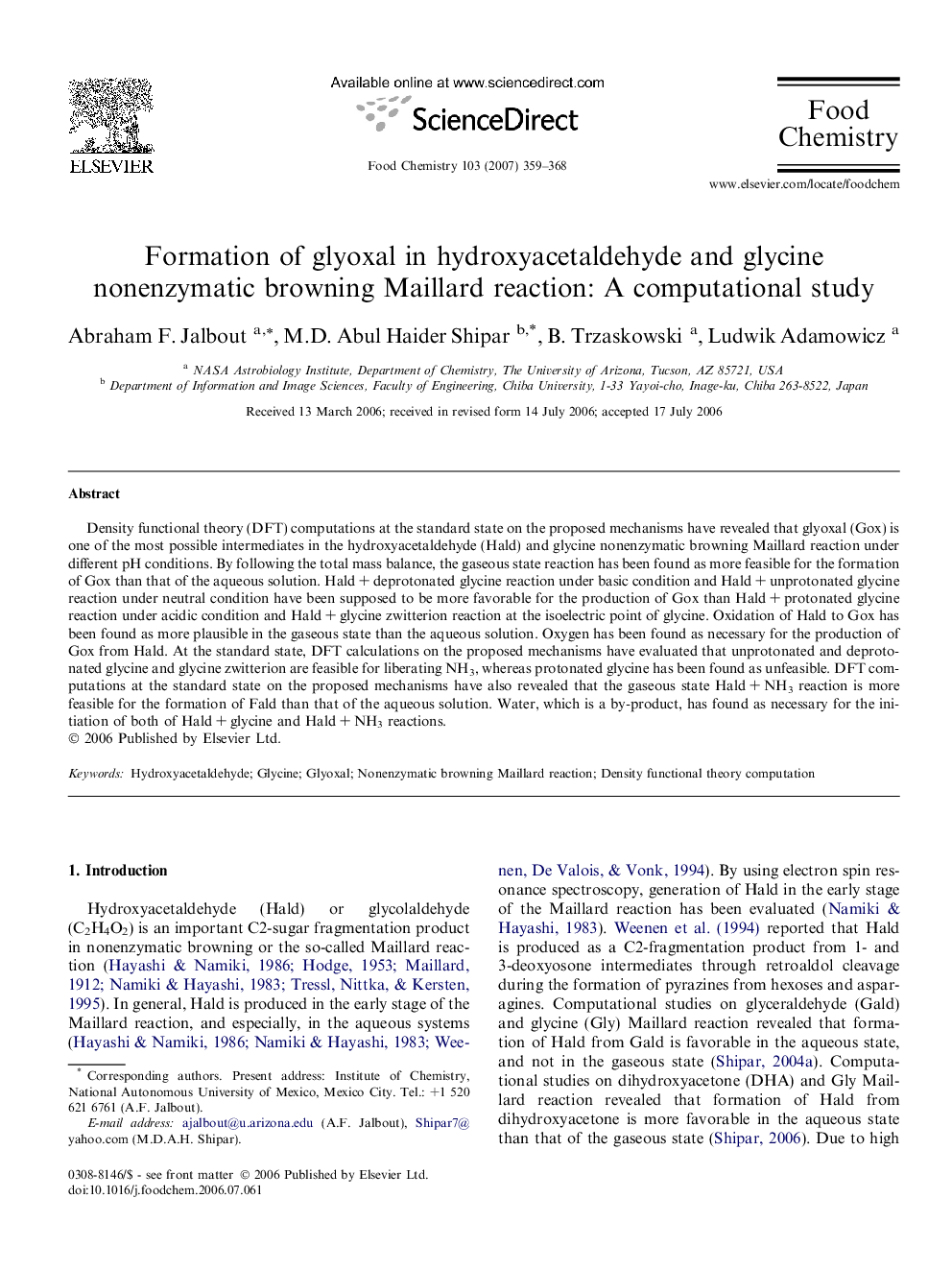| کد مقاله | کد نشریه | سال انتشار | مقاله انگلیسی | نسخه تمام متن |
|---|---|---|---|---|
| 1190598 | 963535 | 2007 | 10 صفحه PDF | دانلود رایگان |

Density functional theory (DFT) computations at the standard state on the proposed mechanisms have revealed that glyoxal (Gox) is one of the most possible intermediates in the hydroxyacetaldehyde (Hald) and glycine nonenzymatic browning Maillard reaction under different pH conditions. By following the total mass balance, the gaseous state reaction has been found as more feasible for the formation of Gox than that of the aqueous solution. Hald + deprotonated glycine reaction under basic condition and Hald + unprotonated glycine reaction under neutral condition have been supposed to be more favorable for the production of Gox than Hald + protonated glycine reaction under acidic condition and Hald + glycine zwitterion reaction at the isoelectric point of glycine. Oxidation of Hald to Gox has been found as more plausible in the gaseous state than the aqueous solution. Oxygen has been found as necessary for the production of Gox from Hald. At the standard state, DFT calculations on the proposed mechanisms have evaluated that unprotonated and deprotonated glycine and glycine zwitterion are feasible for liberating NH3, whereas protonated glycine has been found as unfeasible. DFT computations at the standard state on the proposed mechanisms have also revealed that the gaseous state Hald + NH3 reaction is more feasible for the formation of Fald than that of the aqueous solution. Water, which is a by-product, has found as necessary for the initiation of both of Hald + glycine and Hald + NH3 reactions.
Journal: Food Chemistry - Volume 103, Issue 2, 2007, Pages 359–368